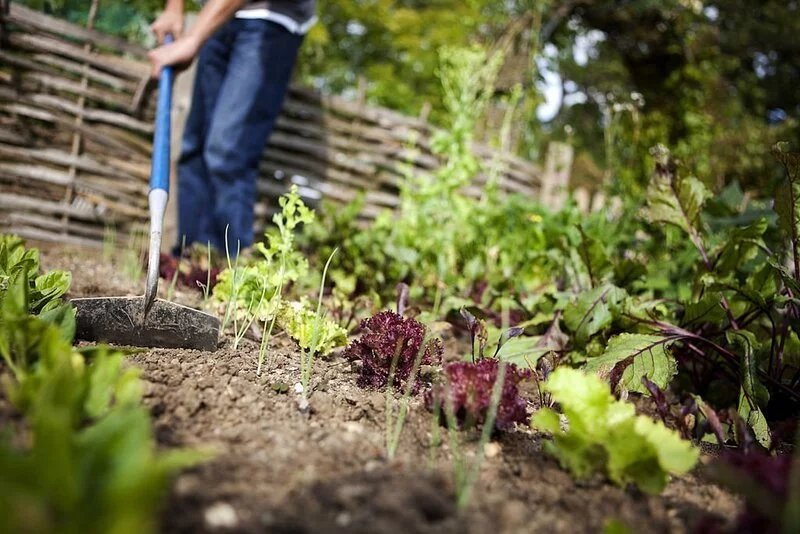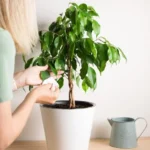Hey green thumbs! Ready to start a new gardening project but don’t have a tiller at hand? Don’t worry, you’re not alone, and you’re definitely not out of options. Tilling is an age-old gardening practice that loosens soil, allowing your plants’ roots to spread and access nutrients more easily. Traditionally, this was done manually, long before the tiller was invented. So, if you’re all set to prepare your garden but the lack of a tiller is holding you back, we’re here to help.
- Loosen, lift and turn garden materials with a durable garden fork featuring advanced ergonomics and a rugged build
- Welded boron steel blade and steel shaft provide durability that far outlasts wood-handled tools and won’t flex like fiberglass
- Angled D-handle keeps your wrist in a neutral position to reduce strain and provides a secure grip
- Teardrop-shaped shaft fits the natural shape of your hand and includes a mid grip for exceptional comfort and control
- Full lifetime warranty
Why You Might Not Need a Tiller
Before we dive into how to till your garden without a tiller, let’s debunk the myth that you absolutely need one. Sure, tillers are great. They’re powerful, efficient, and can save a lot of time. But not having one shouldn’t stop you from creating a thriving garden. In fact, manual tilling has its own advantages. It’s gentler on the soil, it allows you to feel and understand the condition of your ground better, and it can be just as effective, especially for small to medium-sized gardens.
In the upcoming sections, we’ll explore the tools you can use instead of a tiller and how to use them. We’ll also share tips to make the process easier and more effective. So keep reading, your lush, vibrant garden awaits!
- 🌷Garden Tool Sets🌷 Including hand trowel, transplant trowel and cultivator hand rake, made of polished high quality aluminum alloy.Ideal for a variety of tasks including pruning, digging, weeding, loosening soil, aerating, transplanting, etc.(It is recommended to use a large equipment to loosen the hard and cracked soil, so as not to cause the fracture of the shovel)
- 🌷Ergonomically Design🌷 Handle is made of high quality TPR rubber, which is comfortable and non-slip, the ergonomic rubber grip with contoured finger grips and palm rest, reduce hand and wrist fatigue while weeding, and features a hang hole for convenient storage.
- 🌷Hand Trowel🌷 Large head displaces more soil to speed work, but the shovel tip is smooth without sharp burr or corner, don’t worry about getting hurt. Ideal for excavation work, such as planting, transplanting, tilling the soil, etc.
- 🌷Transplant Trowel🌷 With two standard units of scale(Inches and centimeters), easy to read and don’t be worn, ideal for removing dirt and measuring when you want to get right depth with the plant, or transplanting small plants and flowers.
- 🌷Cultivator Hand Rake🌷 The claw body’s thickness is 7 mm with more sturdy structure, so it is hard to break, ideal for decomposing soil for ventilation, cleaning up waste, removing weeds or mixing soil with fertilizer.
Tools Required for Manual Tilling
Manual tilling doesn’t require fancy equipment. In fact, you may already have everything you need in your garden shed. Here are the basic tools you’ll need:
- Garden Spade or Shovel: This is your main tool for digging and turning the soil.
- Garden Fork: This is used for breaking up hard soil and clumps, and for mixing organic matter into the soil.
- Rake: A garden rake is useful for leveling the soil and removing larger rocks or debris.
- Gloves: Protect your hands from blisters and dirt with a sturdy pair of gardening gloves.
- Compost or Organic Matter: While not a tool, adding compost or organic matter improves soil health, aiding plant growth.
Preparing Your Garden: A Step-by-Step Guide
- Step 1: Clear the Area: Remove any large rocks, weeds, or other debris from the area where you’ll be tilling.
- Step 2: Moisten the Soil: If the soil is very dry, water it lightly a day before you plan to till. This will make it easier to work with.
- Step 3: Dig with the Spade or Shovel: Dig into the soil, going about a spade’s depth. Lift the soil and turn it over.
- Step 4: Break Up Clumps: Use your garden fork to break up large clumps of soil. The goal is to make the soil crumbly.
- Step 5: Add Compost or Organic Matter: Spread a layer of compost or organic matter over the soil.
- Step 6: Mix In Compost: Use your garden fork to mix the compost into the soil.
- Step 7: Smooth the Soil: Use your rake to level the soil surface, removing any remaining rocks or debris.
Remember, tilling is tough work, so take breaks as needed. It’s not a race, and it’s important to care for your body as well as your garden.
Tips for Effective Manual Tilling
Tilling manually can be quite a workout, but here are a few tips to make the process easier and more effective:
- Timing is Key: The best time to till your garden is in the spring when the soil is damp but not wet. If the soil forms a ball when you squeeze it, wait a bit longer.
- Use Compost Generously: Organic matter not only nourishes your soil, but also makes it easier to work with.
- Rotate Your Crops: If you’re growing vegetables, rotating your crops can help maintain soil health and prevent the buildup of pests.
- Work in Sections: To avoid feeling overwhelmed, break your garden into sections and tackle one at a time.
Benefits of Manual Tilling
While manual tilling requires a bit more elbow grease, it comes with its own benefits:
- Soil Preservation: Manual tilling is gentler on the soil structure and beneficial microorganisms living in it.
- Cost-Effective: You save on the cost of purchasing or renting a tiller.
- Better Soil Contact: Working the soil by hand helps you identify issues like rocks, roots, or hard patches more effectively.
Conclusion
By now, you should be ready to roll up your sleeves and till your garden, tiller or no tiller. While it might seem like a daunting task, remember that manual tilling is not just about preparing your garden for planting. It’s also about connecting with your garden, understanding your soil, and working with nature to create a thriving, bountiful garden. So go ahead, grab your spade, and start tilling.






